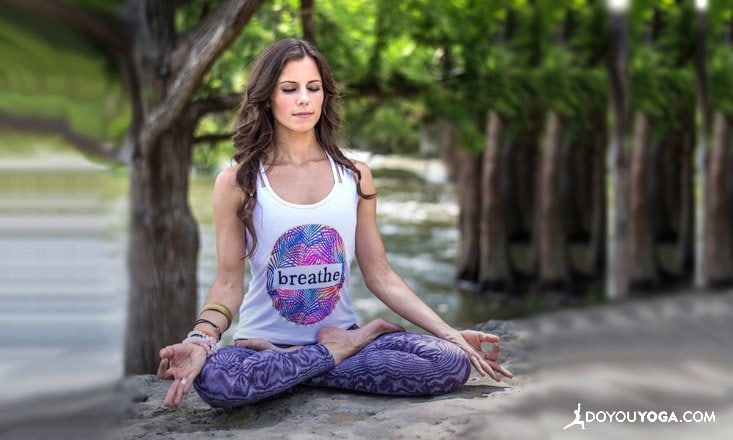To gain stronger muscles, you have to exercise them repetitively and consistently. The same goes for meditation.
In order to train your brain and transform your mind, you have to practice. This new year, follow these tips and suggestions on how to make your meditation practice stick and uphold your goals long after the new year's resolution novelty wears off.
Create your own meditation space.
When you step into a space that you always associate with meditation, it will help you to get into the meditation mindset. Set up your meditation space with things that are meaningful to you.
Some ideas: candles, a cushion or blanket to sit on, mala beads, an image or quote, a plant. Also, having a physical space will be a visual reminder to practice.
Choose a time of day to meditate.
Our energy levels fluctuate during the day, and so do the thoughts running through our heads. Choose a time when you have a decent amount of energy (meditation is not a time to catch some Zzz’s) and also when is your mind most naturally clear. When you find what works for you, make it a routine.
Get essential oils involved.
Essential oils have an unbelievable impact on mood and energy levels. If you are feeling down, a citrus oil (grapefruit, orange, lemon) will elevate your mood. If you are feeling stressed out, a woodsy oil (pine, cedarwood, sandalwood) will ground you. If you are feeling tired, a mint oil (peppermint, spearmint) will invigorate you.
Mix up your practice with different meditation techniques.
There is a lot of misconception that meditation requires a person to sit on the floor with their legs crossed and their hands resting in some kind of mudra (you can probably picture this image perfectly). Au contraire! There are many different techniques you can use to grow your practice and keep yourself engaged. Here are a few examples…
Walking meditation. This technique is great for people who find sitting still to be challenging. When I was in college, I would often meditate on my walk to class. I lived off-campus and my farthest class was about a 15-minute walk. This was a great time for me to meditate because I felt productive utilizing my time to both meditate and get myself to class.
Mala beads. Meditating with mala beads adds in the sensory anchor of touch to keep you focused on your practice. Hold the mala in your hand and using your thumb, pull a bead towards you while you take an inhale and exhale. Continue all the way around the mala. (You can also do this with marbles, small stones, or beans—uncooked please.)
Visual meditation. You don’t have to close your eyes while meditating. Watch a candle flicker, watch the wind rustle the trees, watch ripples in a pond. Find something with a repetitive movement and pour all your focus into it.
Incorporate mindfulness into your day-to-day life.
Meditation can also be incorporated into your normal life through the practice of mindfulness. Mindfulness is a state of awareness with no judgment or attachment of our thoughts and life as it is. It allows us to be present in each moment, and only that moment, for what it is.
The New York Times has a weekly updated column titled, “Meditation for Real Life,” with tips on how to live a mindful life in your average day-to-day activities like drinking a cup of coffee, washing the dishes, or holiday shopping.
Find a teacher/group/app to support you.
Maintaining any practice on your own is challenging. If you can, find a teacher who can lead you or a group you can practice with. If that’s not your thing, there are lots of apps and podcasts out there with daily tips or meditations to keep you on track. Here are a few I’ve tried and enjoyed:
On days when you feel like you just…can…not guide yourself to simply focus on your breath for 1-2 minutes, when distractions, worries, or unwanted thoughts pop into your head, refocus on your breath. And re-focus again. And again.
After a couple minutes of slowing down your mind, you might find you are ready to meditate. Or you might find you need something else—sleep, food, or movement—and that’s okay. As you develop your meditation practice, you will become more tuned in with your mind and body and deepen your self-awareness. It’s all a part of the journey.


